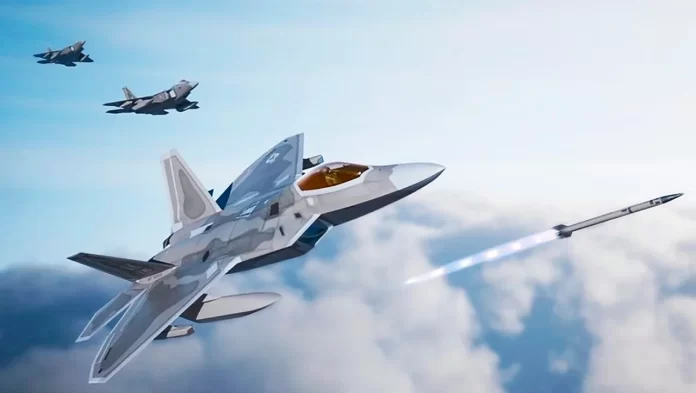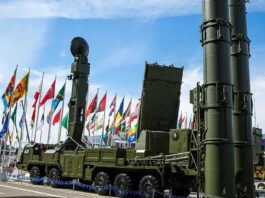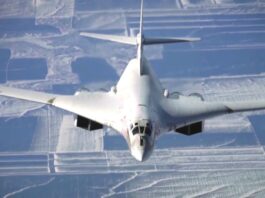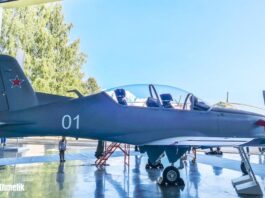The next-generation air-to-air missile for the United States military, the AIM-260 “Joint Advanced Tactical Missile” (JATM for short), is expected to accelerate production this year, according to a report in the US Air Force Magazine on May 2. This information was provided by Secretary of the United States Air Force Frank Kendall during his appearance before the Senate Armed Services Committee. General Charles Brown, the Chief of Staff of the United States Air Force, has stated that this missile will also be mounted on autonomous unmanned combat aircraft called “Loyal Wingman.”
In his testimony before the Senate, Kendall stated that manufacturing of the AIM-260 would begin this year and that he would seek funding to extend the production line already in place to fulfil the projected demand.
The AIM-260 from Lockheed Martin is the air-to-air missile of the next generation. It will be installed on fighter planes that the United States Air Force, Navy, and Marine Corps use. The year 2022 was considered the ideal time to achieve what is known as initial operational capability (IOC). The United States Air Force is in charge of the missile’s development, and the F-22 fighters will be the first aircraft to use it once it is manufactured. The AIM-120 missile series is the primary air-to-air weapon currently in use; however, it is anticipated that the AIM-260 will soon replace it due to the AIM-260’s substantially longer range. The capabilities and performance of the AIM-260 are a closely guarded secret, especially whether it has a multi-mode guiding head.
The “260” in the AIM-260 name is typically considered the standard range data (since prior missile designations are sequential). This represents an increase of more than 60 per cent compared to the typical range of 150 to 160 km for current air-to-air missiles in the United States Air Force.
Brown stressed the value of the AIM-260 in supporting “Loyal Wingman” in integrated military operations by pointing out its usefulness. Kendall has claimed that he believes the “loyal wingman” drones will be deployed by the United States Air Force in the late 2020s (before the year 2030) and that programme development is still proceeding. At this time, no clearly defined path leads to a Loyal Wingman. In response to questions posed by senators, Kendall referred to “China’s capabilities” as a “rapidly developing threat.” The US desire for the AIM-260 to counter China’s “next generation missile,” the PL-15, was mentioned right at the start of the article.
According to research that is currently being conducted by the US Air Force Scientific Advisory Board, there is currently a “lack of ability to rapidly or effectively transform science and technology.” As a result, the armed forces need to change their “procurement structure” to improve their ability to respond to constantly shifting threats. Kendall reported that the United States Air Force aimed to boost ammunition supply capacities by rapidly increasing the production of the AIM-260. It has been requested that multi-year procurement authorisations be granted for the AIM-120 AMRAAM, the AGM-158A/B JASSM, and the AIM-158C LRASM. Additionally, an additional $1.5 billion in expenditures for the purchase of ammunition will increase the efficiency of manufacturing the AIM-120 and the AIM-260.
At the beginning of April, Lieutenant General Richard Moore, the Deputy Chief of Staff for Plans and Programmes in the United States Air Force, observed that the increased acquisition of the AIM-120 did not suggest any problems with the AIM-260. Moore also stated that once production begins, there will be a speedy completion of mass production and delivery of the missiles. Moore and other officials have stated that the Department of Defence wants to increase production in response to the United States providing weapons to Ukraine without promptly replenishing US supplies. In a sense, the conflict in Ukraine has led to an emphasis on accelerating ammunition acquisition, which means that manufacturing lines for AIM-120 and any other ammunition that is “popular and currently in production” are expanding. This is because the conflict has led to an emphasis on accelerating ammunition procurement.
China has also made significant advances in air-to-air missile support, such as the active PL-10 and PL-15 air-to-air missiles, which can allegedly outperform the American AIM-9X and AIM-120 series air-to-air missiles.
The range of air-to-air missiles has increased significantly with each new development iteration. The initial generation had a range of tens of kilometres, the second generation had a range of more than 30 kilometres, and the early third generation had a range of more than 70 kilometres. The third generation has recently seen variants ranging up to 150 kilometres. AIM-260, representing the fourth generation of air-to-air missiles, can attain a range of approximately 260 kilometres due to improvements in materials, power, and other fields. In the near future, only China and the United States are likely to achieve this. Although the Russian Aerospace Forces have already deployed the R-37, it cannot be classified as a fourth-generation air-to-air missile due to its theoretical range of approximately 300 kilometres.
India is also known to be developing the Astra Mk3 air-to-air missile, which has an estimated range of about 360 kilometres.







[…] Le Lancet met sous pression l’artillerie ukrainienne, notamment certains canons de 155 mm fournis par les Occidentaux, les Russes utilisant ce drone « comme une forme de contrebatterie », a expliqué de son côté l’analyste indien Girish Linganna dans la publication Frontier India . […]
[…] Le Lancet met sous pression l’artillerie ukrainienne, notamment certains canons de 155 mm fournis par les Occidentaux, les Russes utilisant ce drone « comme une forme de contrebatterie », a expliqué de son côté l’analyste indien Girish Linganna dans la publication Frontier India . […]